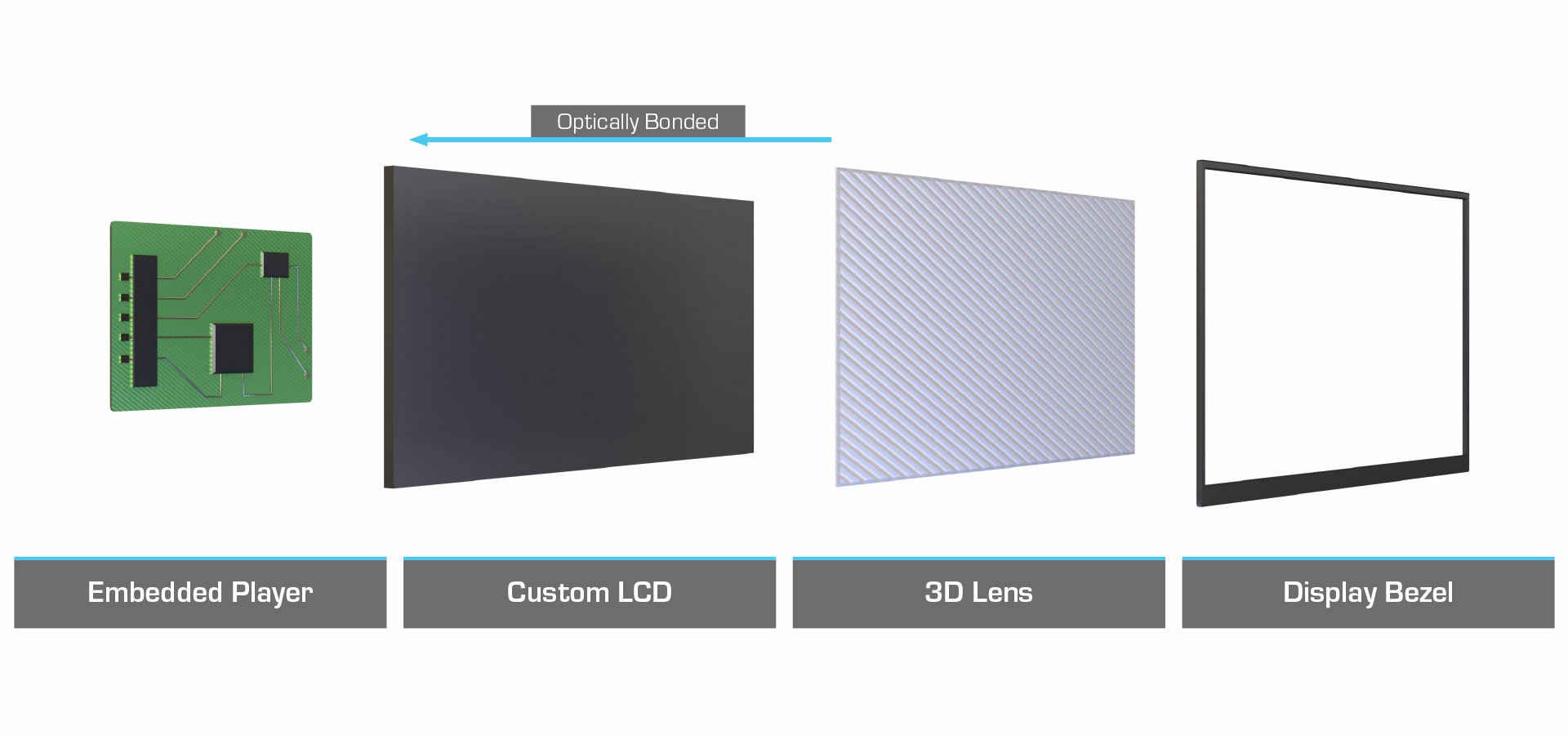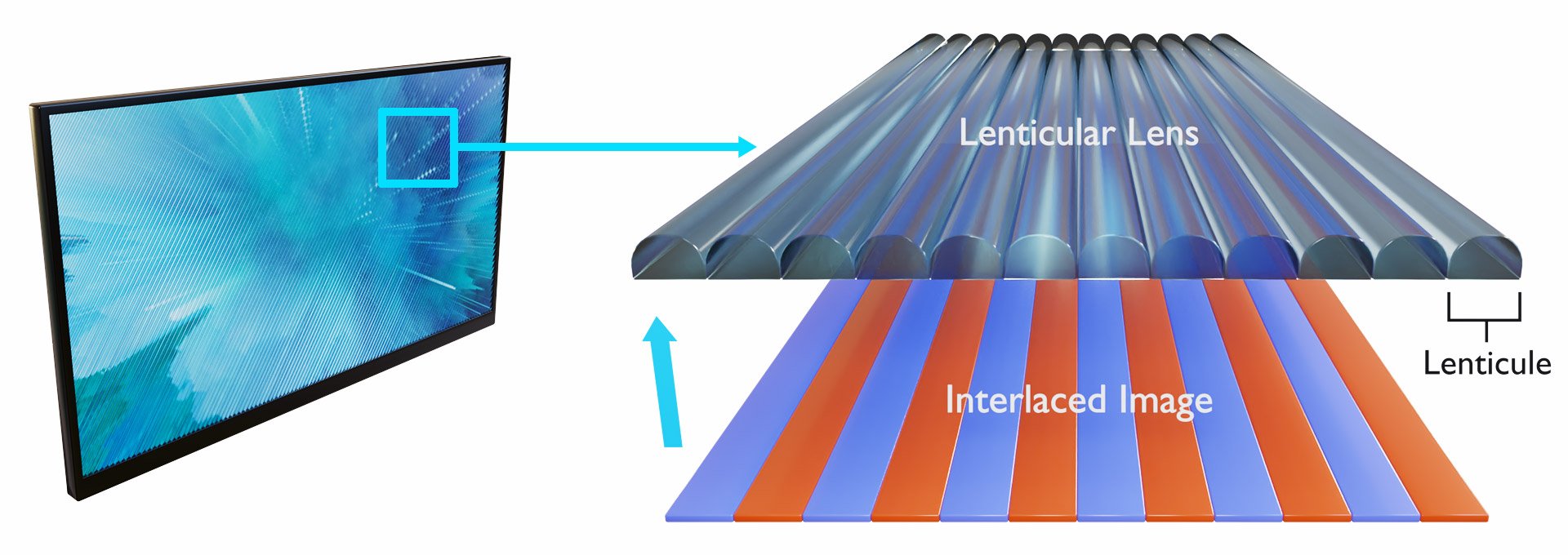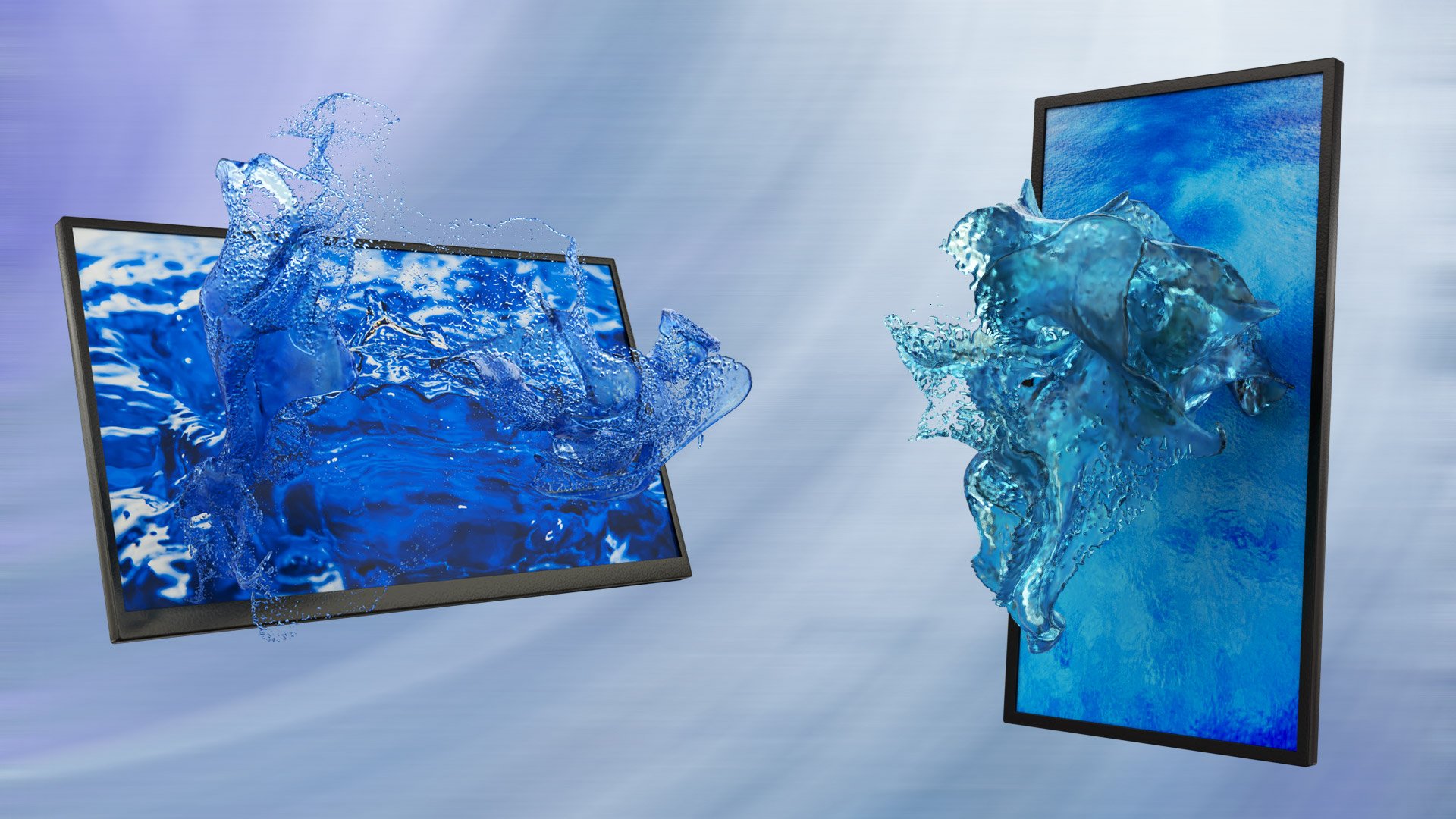The global effects of COVID-19 in terms of health, social interaction, and economics have been pretty well documented. The fallout has been quite dramatic for those of us who depend upon “show and tell” - introducing our products through onsite demonstrations, in showrooms, or at conventions. Right now, if you’re still employed, you’re stuck at home “zooming” away, wondering when things will get back to normal so you can get on with what you do so well – getting people excited about that which truly excites you! .
Trust me, I’m right there with you.
FORGET WHAT YOU’VE SEEN
For the past two years, I’ve been very excited about 4K glasses-free 3D display technology (auto-stereo). That’s right, LED backlit 4K LCD displays, with a lenticular lens that’s optically bonded to the screen, pixel-aligned, allowing viewers to move in front of the screen, stand almost anywhere , and be comfortable seeing 3D video imagery without glasses.
Impossible you say?! Au contraire! You’ve probably seen these so-called 3D displays at trade shows when they were low resolution sub HD, using inferior optics and showing poor quality content - there was zone-jumping, motion artifacts, low resolution and parallax issues, not to mention the ghosting and lack of clarity that stymied a commercially viable display solution. No one can deny what you’ve seen, they were painful to watch. But, that was then and this is now - it’s what you haven’t seen that really counts. Suffice to say that all glasses-free 3D displays are not created equal, nor is the content that is displayed on them!

PARTICULAR LENTICULAR - Print vs. Digital Displays
Lenticular technology has been around for a long time, and the first time you saw it might have been on a movie poster, or in a comic book, or when you pulled out the prize in your Cracker Jack’s box. Do you remember moving your head back and forth and wondering how the heck one image turned into another? Was there something up with your eyes? Your brain? Actually, neither. The image was manufactured as a lenticular print.
In lenticular printing, two (or more) images are sliced up vertically in columns and the slices of one image are alternated with the slices of the second image. Once combined and printed, a “lenticular lens” that matches the Dots Per Inch (DPI) of the printed page is glued on top. This thin, transparent sheet has a mostly uniform collimated lens from one edge to the other. When properly aligned, the optical properties of the lens allow your eyes to see one of the images discreetly through the left eye and the other through the right eye which create the unique “flip” effect.
For glasses-free 3D displays, a similar thin, transparent lenticular lens can also be used. It produces two perspectives, one for each eye so you can see 3D without having to wear 3D glasses. The lens keeps all of the slightly different perspectives parallel and at the correct distance from each other in order to get the correct piece of the image to your left or right eye.
Unlike the print lenticular lenses, the digital displays need lenticular lenses that are much more precise to perfectly match the tight and varying pixel densities of each size LCD monitor.
How many lenticules are there on a lenticular lens? A lot! Since each lens is cut to match the display screen size, one lenticule is required for each row of pixels on that display both vertically and horizontally. In addition to the number of lenses per inch, there are other important considerations when creating a great 3D Display such as the curvature of the lens and the focal distance from the light rays with tolerances down to the ten thousandth of an inch!
Suffice it to say that the lenticular lens, optical bonding materials, film stack, LCD monitor and curing process are critical to producing a high quality glasses-free 3D display but the creating a great 3D experience overall doesn’t end there.

QUALITY NOT QUANTITY CONTENT SEALS THE DEAL
Once you have a great display with the best optics the other critical component is the content. How well was it filmed in 3D, or animated and the quality of those underlying elements, such as the capture and alignment of the stereoscopic images are extremely important.
The perception of quality with any display technology, 2D included, is often directly linked to the clarity and vibrancy of the content displayed on the device.
Glasses-free 3D adds a whole new set of volumetric considerations for the content creator in order to deliver a convincing experience, like avoiding stereo window violations, cross-talk and other 3D faux pas that might bother the viewers eyes or retract from the illusion presented to the viewer. Producing content specifically for Glasses-Free 3D that takes these and other factors into account from the get-go will provide an optimal experience.

IT’S ALL ABOUT THE PLATFORM
Most consumers aren't typically concerned with the hardware specs of a display and don't particularly care to know how it works, but rather appreciate or marvel that it does so effortlessly. Take Apple's iPad; this device is a prime example of engineering genius, but the quality of the content, availability of top notch apps in high resolution and the exquisitely designed user interface are what truly make the device a game changer in the eyes of consumers. The device is intuitive and the UI simply does what you want it to do and has applications and content that are formatted perfectly for an unparalleled and elegant experience — that's the differentiator for Apple's iPad, it’s not just a device with cool features, but it’s part of an integrated platform where the user experience, not price, is paramount.
The same can be said for 3D, if you want a superior 3D experience you need everything to work in harmony from the hardware to the software, to the production tools, to the content. All 3D displays are not created equal but there is so much more to consider than just the display alone.
At Magnetic 3D, we are committed to our customers success by providing commercial-grade 3D monitors with incredible capabilities and compatibility, but more importantly, like Apple, we offer our clients a fully integrated platform that delivers an optimal experience from the optics to the content. We are ready to show you that not all glasses-free 3D displays are created equal, and we’ve got the end-to-end platform to prove it.
Andy Gellis & Tom Zerega
September 15, 2020



